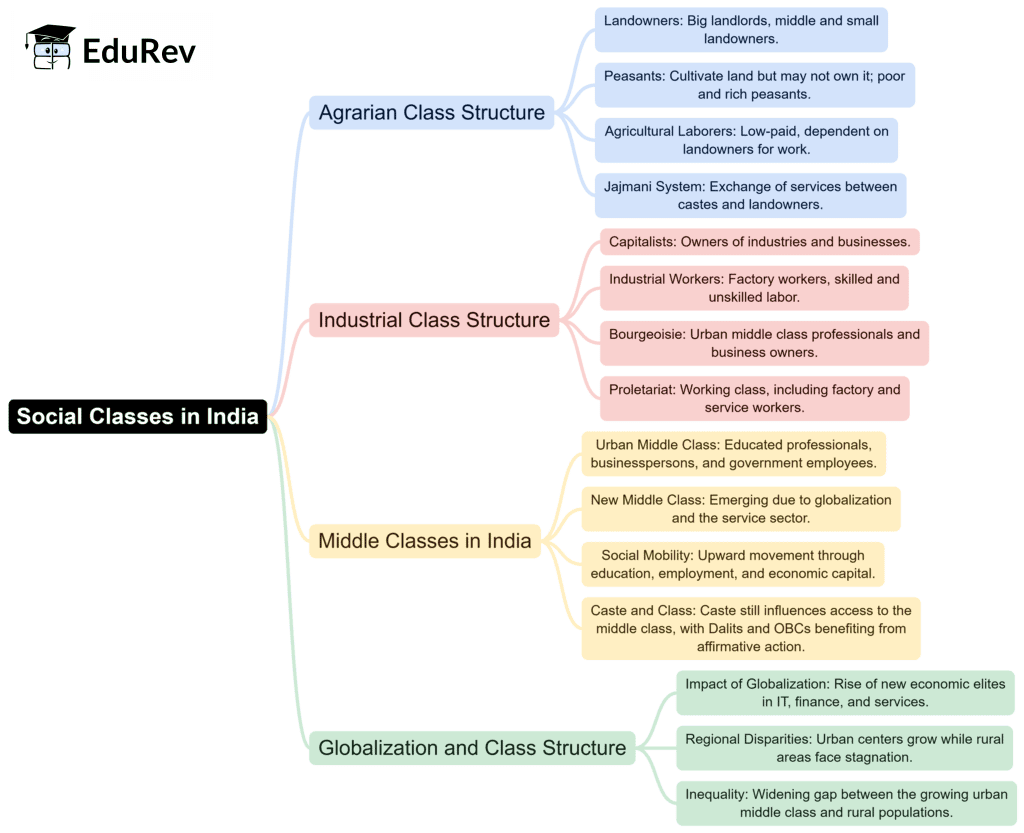UPSC Exam > UPSC Notes > Sociology Optional for UPSC (Notes) > Mind Map: Social Classes in India
Mind Map: Social Classes in India | Sociology Optional for UPSC (Notes) PDF Download

The document Mind Map: Social Classes in India | Sociology Optional for UPSC (Notes) is a part of the UPSC Course Sociology Optional for UPSC (Notes).
All you need of UPSC at this link: UPSC
|
120 videos|427 docs
|
FAQs on Mind Map: Social Classes in India - Sociology Optional for UPSC (Notes)
| 1. What are the main social classes in India? |  |
Ans. The main social classes in India can be broadly categorized into four primary groups: the Upper Class (often including the wealthy and elite), the Middle Class (professionals and educated individuals), the Working Class (laborers and service workers), and the Lower Class (often marginalized communities). Additionally, caste systems historically play a significant role in defining social stratification in India.
| 2. How does the caste system affect social classes in India? |  |
Ans. The caste system in India has a profound impact on social classes, as it historically determined an individual’s occupation, social status, and even marriage prospects. While modern legislation aims to reduce caste-based discrimination, many caste-related inequalities persist, influencing socio-economic mobility and access to resources.
| 3. What role does economic development play in changing social classes in India? |  |
Ans. Economic development in India has led to the emergence of a more prominent middle class, driven by globalization, urbanization, and increased educational opportunities. This shift has transformed social dynamics, with more individuals able to rise from lower classes into the middle class, thus altering traditional social structures.
| 4. What are the challenges faced by lower social classes in India? |  |
Ans. Lower social classes in India face numerous challenges, including poverty, lack of access to quality education and healthcare, unemployment, and social discrimination. These factors often perpetuate a cycle of poverty and limit upward mobility for individuals in these classes.
| 5. How does globalization impact social class structure in India? |  |
Ans. Globalization has significantly impacted the social class structure in India by creating new employment opportunities, fostering entrepreneurship, and enhancing access to technology. However, it has also led to increased disparities between different social classes, as some benefit more than others from these changes, leading to economic inequality.
Related Searches















